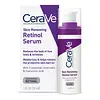What's inside
What's inside
 Key Ingredients
Key Ingredients

 Benefits
Benefits

 Concerns
Concerns

 Ingredients Side-by-side
Ingredients Side-by-side

Water
Skin ConditioningGlycerin
HumectantDicaprylyl Ether
EmollientDimethicone
EmollientDimethicone Crosspolymer
Emulsion StabilisingPolyacrylamide
C13-14 Isoparaffin
EmollientLaureth-7
EmulsifyingMethylsilanol Mannuronate
Skin ConditioningPhenoxyethanol
PreservativeEthylhexylglycerin
Skin ConditioningSilanetriol
Hyaluronic Acid
HumectantRetinyl Palmitate
Skin ConditioningHibiscus Sabdariffa Flower Extract
Skin ConditioningHippophae Rhamnoides Fruit Oil
Skin ProtectingOenothera Biennis Oil
EmollientMilk Lipids
Skin ConditioningCeramide NP
Skin ConditioningAcrylates/C10-30 Alkyl Acrylate Crosspolymer
Emulsion StabilisingTocopheryl Acetate
AntioxidantSodium Hydroxide
BufferingSodium Ascorbyl Phosphate
AntioxidantPanthenol
Skin ConditioningAllantoin
Skin ConditioningDisodium EDTA
CI 16185
Cosmetic ColorantCI 15985
Cosmetic ColorantCI 42090
Cosmetic ColorantWater, Glycerin, Dicaprylyl Ether, Dimethicone, Dimethicone Crosspolymer, Polyacrylamide, C13-14 Isoparaffin, Laureth-7, Methylsilanol Mannuronate, Phenoxyethanol, Ethylhexylglycerin, Silanetriol, Hyaluronic Acid, Retinyl Palmitate, Hibiscus Sabdariffa Flower Extract, Hippophae Rhamnoides Fruit Oil, Oenothera Biennis Oil, Milk Lipids, Ceramide NP, Acrylates/C10-30 Alkyl Acrylate Crosspolymer, Tocopheryl Acetate, Sodium Hydroxide, Sodium Ascorbyl Phosphate, Panthenol, Allantoin, Disodium EDTA, CI 16185, CI 15985, CI 42090
Water
Skin ConditioningGlycerin
HumectantCaprylic/Capric Triglyceride
MaskingPotassium Cetyl Phosphate
EmulsifyingHydrogenated Palm Glycerides
EmollientPolysorbate 20
EmulsifyingPEG-40 Stearate
EmulsifyingCyclopentasiloxane
EmollientHydroxyethylcellulose
Emulsion StabilisingPotassium Phosphate
BufferingCeramide NP
Skin ConditioningCeramide AP
Skin ConditioningCeramide EOP
Skin ConditioningCarbomer
Emulsion StabilisingNiacinamide
SmoothingIsoceteth-10
EmulsifyingDimethicone/Vinyl Dimethicone Crosspolymer
Skin ConditioningTriethanolamine
BufferingCetearyl Alcohol
EmollientBehentrimonium Methosulfate
Cichorium Intybus Root Extract
MaskingLecithin
EmollientRetinol
Skin ConditioningSilica
AbrasiveSodium Lauroyl Lactylate
EmulsifyingCholesterol
EmollientPhenoxyethanol
PreservativeTocopherol
AntioxidantAlcohol
AntimicrobialHydroxyacetophenone
AntioxidantCitric Acid
BufferingHydrolyzed Hyaluronic Acid
HumectantPentylene Glycol
Skin ConditioningXanthan Gum
EmulsifyingPhytosphingosine
Skin ConditioningButyrospermum Parkii Butter
Skin ConditioningEthylhexylglycerin
Skin ConditioningWater, Glycerin, Caprylic/Capric Triglyceride, Potassium Cetyl Phosphate, Hydrogenated Palm Glycerides, Polysorbate 20, PEG-40 Stearate, Cyclopentasiloxane, Hydroxyethylcellulose, Potassium Phosphate, Ceramide NP, Ceramide AP, Ceramide EOP, Carbomer, Niacinamide, Isoceteth-10, Dimethicone/Vinyl Dimethicone Crosspolymer, Triethanolamine, Cetearyl Alcohol, Behentrimonium Methosulfate, Cichorium Intybus Root Extract, Lecithin, Retinol, Silica, Sodium Lauroyl Lactylate, Cholesterol, Phenoxyethanol, Tocopherol, Alcohol, Hydroxyacetophenone, Citric Acid, Hydrolyzed Hyaluronic Acid, Pentylene Glycol, Xanthan Gum, Phytosphingosine, Butyrospermum Parkii Butter, Ethylhexylglycerin
 Reviews
Reviews

Ingredients Explained
These ingredients are found in both products.
Ingredients higher up in an ingredient list are typically present in a larger amount.
Ceramide NP is a type of ceramide.
Ceramides are intercellular lipids naturally found in our skin that bonds dead skin cells together to create a barrier. They are known for their ability to hold water and thus are a great ingredient for dry skin.
Ceramides are an important building block for our skin barrier. A stronger barrier helps the skin look more firm and hydrated. By bolstering the skin ceramides act as a barrier against irritating ingredients. This can help with inflammation as well.
If you would like to eat ceramides, sweet potatoes contain a small amount.
Read more about other common types of ceramides here:
Ceramide AP
Ceramide EOP
Ethylhexylglycerin (we can't pronounce this either) is commonly used as a preservative and skin softener. It is derived from glyceryl.
You might see Ethylhexylglycerin often paired with other preservatives such as phenoxyethanol. Ethylhexylglycerin has been found to increase the effectiveness of these other preservatives.
Glycerin is already naturally found in your skin. It helps moisturize and protect your skin.
A study from 2016 found glycerin to be more effective as a humectant than AHAs and hyaluronic acid.
As a humectant, it helps the skin stay hydrated by pulling moisture to your skin. The low molecular weight of glycerin allows it to pull moisture into the deeper layers of your skin.
Hydrated skin improves your skin barrier; Your skin barrier helps protect against irritants and bacteria.
Glycerin has also been found to have antimicrobial and antiviral properties. Due to these properties, glycerin is often used in wound and burn treatments.
In cosmetics, glycerin is usually derived from plants such as soybean or palm. However, it can also be sourced from animals, such as tallow or animal fat.
This ingredient is organic, colorless, odorless, and non-toxic.
Glycerin is the name for this ingredient in American English. British English uses Glycerol/Glycerine.
Learn more about GlycerinPhenoxyethanol is a preservative that has germicide, antimicrobial, and aromatic properties. Studies show that phenoxyethanol can prevent microbial growth. By itself, it has a scent that is similar to that of a rose.
It's often used in formulations along with Caprylyl Glycol to preserve the shelf life of products.
Water. It's the most common cosmetic ingredient of all. You'll usually see it at the top of ingredient lists, meaning that it makes up the largest part of the product.
So why is it so popular? Water most often acts as a solvent - this means that it helps dissolve other ingredients into the formulation.
You'll also recognize water as that liquid we all need to stay alive. If you see this, drink a glass of water. Stay hydrated!
Learn more about Water